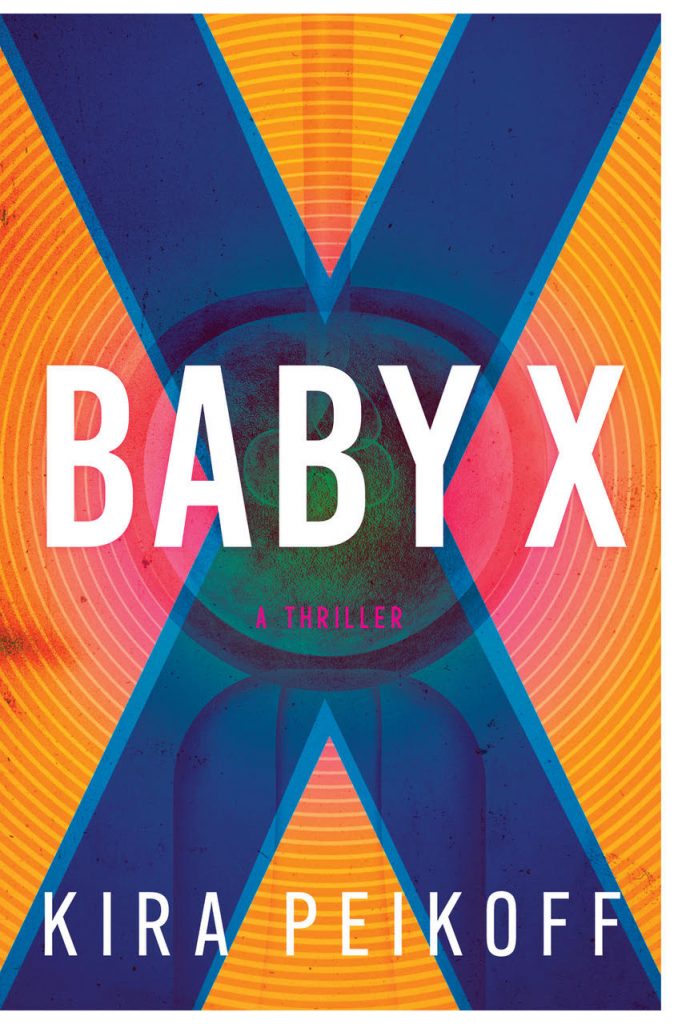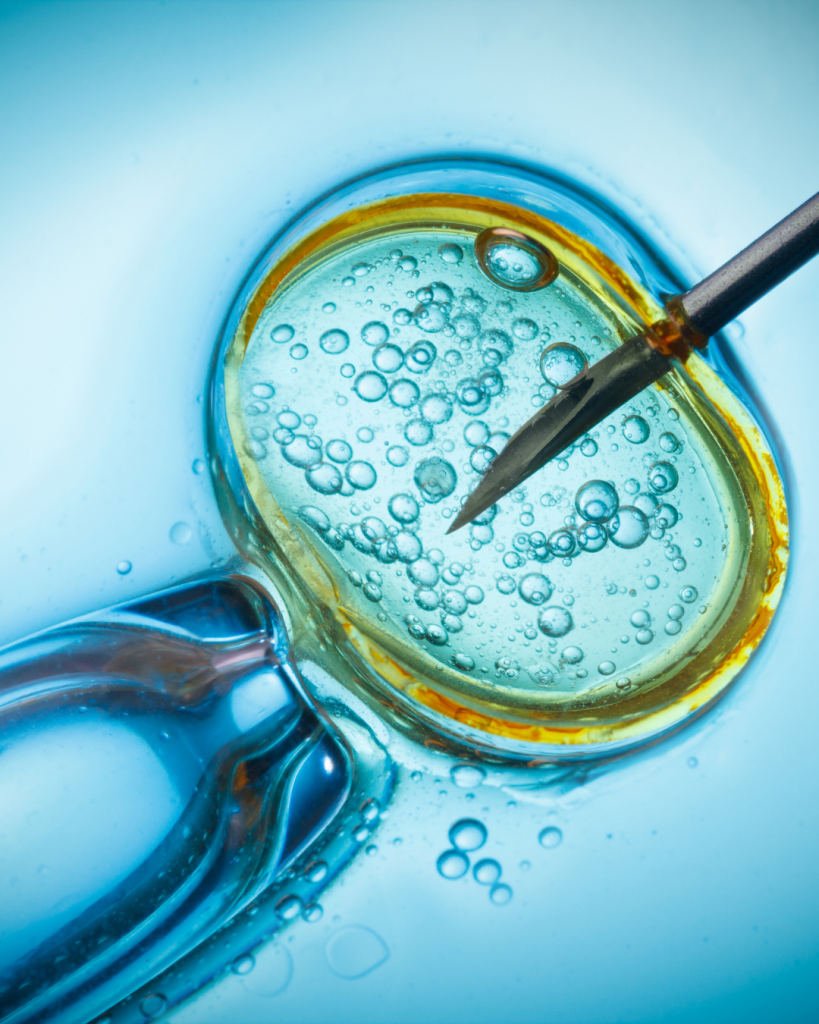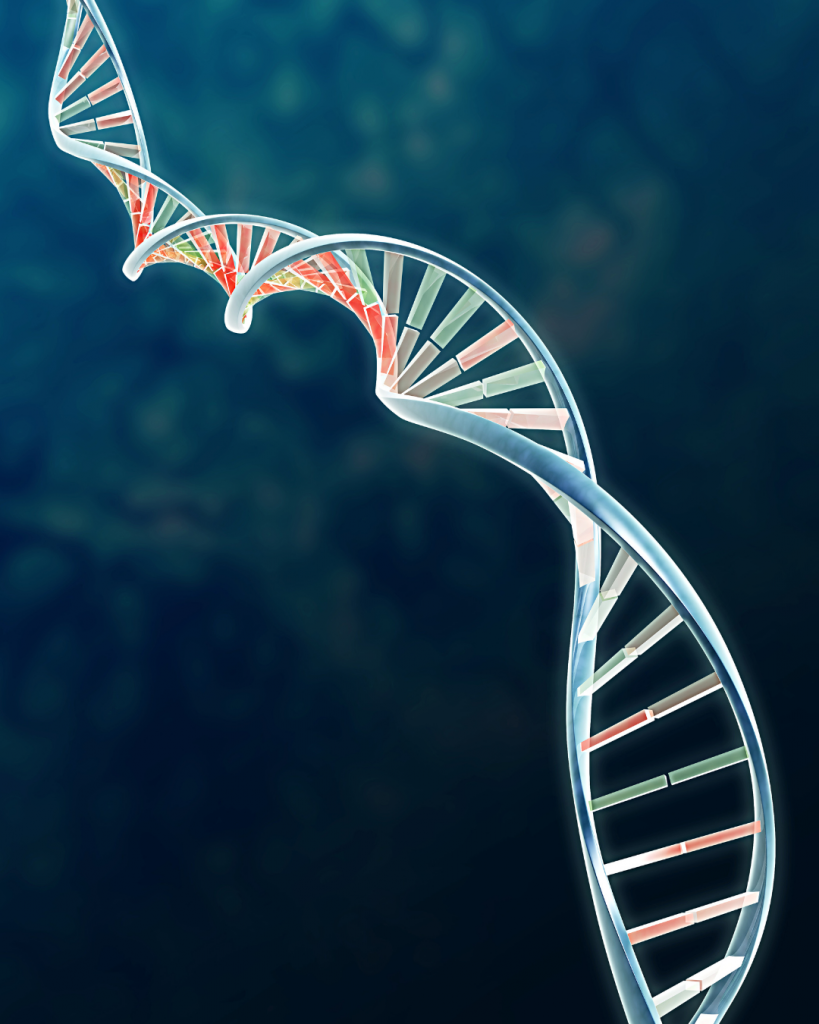Kimberley Howe: Delve into Kira Peikoff‘s world of bioethics, where the thrills will leave you with with serious chills.
A Q&A with Baby X: A Thriller Author Kira Peikoff
What led you to study bioethics at Columbia University?

I had never actually heard of bioethics as a field of study until 2012. I had just published my first novel, Living Proof, a thriller about the implications of the criminalization of embryonic stem cell research. I knew that I was deeply interested in—and hopeful about—the promises of biotechnology in helping us live longer, healthier lives and eradicating much human suffering. I also knew that I needed to become more educated in order to write about these topics in both fiction and non-fiction, as I also hope to put my journalism degree to good use. I started researching programs to study biotechnology, but as much as I enjoyed learning about biology in college, I realized that my true interest didn’t lie in the technology per se, but rather its potential to usher in new paradigms on our lives and in society. The philosophical, moral, and legal questions surrounding new scientific developments drew me in, and made me want to learn more.
That’s when I stumbled upon the relatively new field of bioethics, and discovered that several graduate programs had sprung up in a few universities. These were interdisciplinary programs for people coming from all different career backgrounds who had a nascent interest in the topics and sought further depth. I discovered that Columbia University, only 35 blocks from my apartment at the time, offered one of the top programs—but I was too late to apply for the Fall semester. It was around May, the program started a few months later, and it was too late for me to take the GREs. I emailed the director anyway and asked for a meeting. I showed up with a hardcover copy of Living Proof and explained that I wanted to keep writing books on these topics, but I needed to educate myself more first. I guess I impressed him enough that he let me in and waived the GRE requirement. He said the book counted instead.
I went on to graduate three years later with my M.S. degree and a perfect GPA. I loved every minute of the program.
How did you pick the thriller genre as a vehicle to not only write incredible adrenaline-pumping plots but also explain incredibly complicated high-tech advancements in science in ways the reader can understand?
The thriller genre is a natural fit for high-tech advancements because it showcases life-and-death stakes for the characters. In real life, emerging technologies stand to affect us all, and in some cases, may save your life or revolutionize your choices. You don’t need to be a scientist to understand and appreciate the effects of technologies becoming real. That’s what I focus on in my books – not a master class in technical details, but hopefully a thought-provoking story that makes you wonder, “What if this were possible? What would I think about it? Would I want it? Who should have the power to choose how this gets used?” These are tricky questions without obvious answers. The kind of questions I enjoy.
Women in STEM historically, have be underrepresented – do you consider yourself a trailblazer? Or consider your work a way to advance women in those fields?
I think the true trailblazers are women like Jennifer Doudna and Katalin Kariko—recent Nobel Prize winners whose basic research has fundamentally improved human life, paving the way for treatments and vaccines that would not have otherwise been possible. I consider myself more of an entertainer who happens to find scientific progress a hugely captivating and endlessly rich source of material. I wish that the grounded sci-fi genre generally attracted more women writers, because many of the topics that emerging science could affect—like fertility, bodily autonomy, and choice—are profoundly relevant.
Baby X: A Thriller is your latest work—in it, you explain much detail about a medical breakthrough known as IVG—in vitro gametogenesis—essentially, any two people on Earth could make a baby! What is IVG? Why choose it for your book?

IVG is a scientific procedure already demonstrated in mice. Cells taken from an individual—via a tissue source like skin, mucus, or blood—can be chemically coaxed to revert back to a blank-cell state, in which they are capable of developing into virtually any cell in the body. This was a Nobel-winning discovery by a Japanese scientist in 2006. From the blank state, the cells can be directed to grow into either sperm OR egg cells in a dish. You can see probably where I’m going with this. Having an easy source of sperm or egg—such as scraping the inside of your cheek for epithelial cells—would dramatically change the possibilities for reproduction. Dozens of embryos could be generated in a lab—no sex required—without any invasive procedures. IVF would be unnecessary.
The real reason this stands to become popular is that prospective parents would be able to have all of their embryos’ genes analyzed before implantation. This is already being offered at some fertility clinics now. It’s called whole genome sequencing, and so far it’s only to screen for diseases. But once parents inevitably demand to find out increasing detail about traits, risks, advantages and disadvantages, all bets are off. Competition will be fierce, and the ethics around parenthood will change.
Today, many of us contemplate this scenario and think, “Oh my god, that sounds like eugenics, it must be wrong.” But I challenge you to consider how social norms will evolve. If you could ascertain that your future baby will not suffer from childhood cancer or have early-onset dementia or be prone to alcoholism, wouldn’t you want to be able to rule those things out of your kid’s future? And if you said no thanks, and rolled the dice the natural way, and your baby was born with a terrible genetic predisposition, would you have made the ethical choice—or the unethical one? These are some of the ideas I explore in Baby X.
What happens should cells from even a water bottle, dirty dish or tissue wind-up in the wrong hands—people trying to steal DNA samplings even from well-sought after celebrities??
There’s always unintended consequences, aren’t there? And that’s what thriller writers are particularly adept at bringing to light. If it indeed becomes possible to generate sperm and eggs on demand from a small biological sample, what’s to stop some resourceful biohackers from rising to meet the demand for the DNA of desirable individuals? As technology evolves, it becomes cheaper and easier to deploy, and the same is true here. In the future, you won’t need a graduate lab at a university to run expensive experiments. You’ll likely to be able to order the equipment you need cheaply online, and with some general biology training, someone with bad intentions could quietly wreak havoc on those who are least expecting it. I imagine the new crime of “nonconsensual reproduction” could come into play, as stalkers and fans seek out the DNA of their favorite celebrities to have their baby.

Although IVG is part of the plot in Baby X, the characters’ interconnections are also a tremendous part of the incredible suspense you’re able to skillfully craft and build—how do you keep all of your characters’ plots, backgrounds and characteristics organized as you write?
I have a secret weapon and it’s called PLOTTR. It’s a software for fiction writers to help you keep track of characters, timelines, and chapters. I could not have written this complex plot without it.
What do you believe makes your process unique to you as a writer?
Once I have the concept in mind, I come up with the twists first, and then I plan my stories backwards and forwards from there, making sure I have a good twist roughly every 75 pages. This keeps my pacing strong and hopefully keeps readers engaged.
You’re now a mother of two young sons, has your role as a mother influenced your writing and the topics you choose?
In this book, it allowed me to relate strongly to my characters and to write with an authenticity that I couldn’t have otherwise. One of my characters, Ember, aches to become a mother, and she’s facing reproduction in a new time when so much advance knowledge and choice complicate matters. Another character, Quinn, is a surrogate, and struggles to unravel a mystery about her client while she’s pregnant and about to give birth to his kid, even though he might be dangerous. While their situations are much different than my own, I put some of my own experiences of pregnancy, anxiety, love and hope for my kids into the story.
Baby X: what do you hope readers get most out of your latest book?
I hope they are wildly entertained, surprised, and satisfied. That would be mission accomplished.

Kira Peikoff is the author of Mother Knows Best, Living Proof, No Time to Die, and Die Again Tomorrow. She has a degree in journalism from New York University and a master’s in bioethics from Columbia University. Her reported articles have appeared in The New York Times, Newsweek, Popular Mechanics and other outlets. She now works in biotech communications, helping spread the word about transformative developments in the life sciences. Peikoff is a proud member of The Authors Guild, International Thriller Writers, and Mystery Writers of America. She lives in New Jersey with her husband and two sons. Her latest thriller, Baby X, releases March 2024.
















































What a fascinating set of research. Now I can’t wait to read “Baby X” — thanks so much for being our guest writer today!!!
I can see where bioethics has been and will continue to be a strongly growing field. There are so many questions and complications already and there will be more and more as the technology moves ahead. Every sword can be two-edged under the right circumstances (or the wrong ones!).
Jurassic Park set the stage for growing life from DNA, and then there was Dolly the sheep, the first animal cloned from an adult somatic cell. We need smaller and smaller amount of DNA for identification purposes. It stands to reason that we could get to the point where securing DNA from a desirable subject to create a child is a possibility. Bioethics seems crucial, but unlikely to prevent it from happening. And imagine if your “hero” just happens to be a singularly horrible person. Incredibly scary, and the basis for a really good thriller!